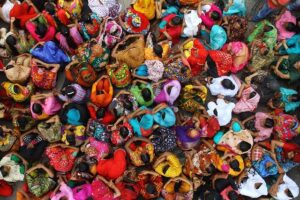In a surprising turn of events, the UCI Gravel World Championships have come under scrutiny for the absence of some of the top American riders, a situation that has left many, including Dutch cyclist Jasper Ockeloen, feeling disappointed and concerned. As the premier event on the gravel racing calendar, the championships were anticipated to showcase the very best talent from around the globe. Ockeloen, who has been vocal about the significance of competitive participation, highlighted the missed opportunity for both athletes and fans alike, emphasizing that the race serves not only as a benchmark for individual glory but also a pivotal moment for the gravel cycling community. With the spotlight now on the reasons behind the lack of US representation, the implications for the future of the sport’s growth in America are more pressing than ever.
Dutch Rider Calls for Increased Participation from US Racers at UCI Gravel World Championships
Jasper Ockeloen, the notable Dutch rider, has expressed his disappointment regarding the absence of elite American racers at the UCI Gravel World Championships. He argued that participating in such a prestigious event is crucial for maintaining the high standards and competitiveness necessary in the world of gravel racing. In a recent statement, Ockeloen highlighted the significance of having a diverse and skilled field, noting that “to race the highest level of the year, they should come here.” He emphasized that the presence of top athletes from the United States not only enriches the competition but also elevates the overall appeal of the championship.
This sentiment resonated throughout the gravel racing community, as many believe that the inclusion of American riders could drive up the stakes and inspire local cyclists. A number of factors may influence their absence, including commitments to domestic events and varying levels of interest in gravel racing itself. Ockeloen urges stakeholders within the sport to foster a deeper connection and encourage broader participation among U.S. talents. Here are a few reasons why their participation is crucial:
- Enhanced competition: More racers lead to closer battles and better performances.
- Increased visibility: American racers can attract greater media attention and sponsorship opportunities.
- Knowledge exchange: Competing against diverse styles allows for skill growth.
Impact of Top Competitors on Global Event Prestige and Opportunities for Growth
The absence of top American riders at the UCI Gravel World Championships has sparked discussions about the implications for the event’s global prestige and future growth opportunities. As key competitors bring heightened visibility and competitiveness, their participation is often seen as a benchmark for the event’s significance on the international stage. Jasper Ockeloen’s disappointment highlights a missed opportunity not just for the riders but for the event organizers aiming to elevate the championship’s profile to match that of other major cycling disciplines. Events thrive on rivalry, and without the inclusion of elite racers from the United States, there is potential for diminished appeal to spectators and sponsors alike.
Moreover, the UCI Gravel World Championships must consider strategic avenues for growth that entail attracting prominent racers while enhancing the overall experience for fans and participants. By cultivating partnerships with cycling teams and leveraging the media to showcase the allure of the event, they can boost engagement and nurture grassroots interest. Potential strategies might include:
- Collaborative marketing campaigns targeting the US cycling scene
- Enhanced prize incentives to draw elite competitors
- Showcasing top-tier talent through pre-event promotional races
A comprehensive approach involving these elements can bolster the championship’s prestige, drawing in high-caliber athletes and elevating its status in the global sports landscape.
Strategies to Boost Engagement and Representation of US Athletes in International Gravel Racing
To enhance the visibility and competitiveness of American athletes on the international gravel racing stage, several approaches can be adopted. Firstly, collaborating with local cycling clubs and organizations to create training programs specifically aimed at gravel racing can help unearth talent and build a stronger grassroots foundation. Additionally, hosting more UCI-sanctioned gravel events in the U.S. would not only foster local competition but also provide American riders with greater accessibility to international race formats and standards. This grassroots strategy can serve as an incubator, creating a funnel of skilled athletes ready to tackle the global scene.
Furthermore, increasing sponsorship opportunities and resource allocation is crucial for fostering a more diverse pool of participants. By engaging with brands that align with gravel racing’s values, financial backing can be redirected towards supporting underrepresented groups in the sport, including women and minority athletes. This can be complemented by establishing mentorship programs that connect seasoned professional riders with up-and-coming talent, thereby enhancing skill, experience, and representation on the world stage. Aiming towards a more inclusive atmosphere could attract broader interest, resulting in higher participation and a stronger presence at international competitions.
Wrapping Up
In conclusion, the absence of elite American racers at the UCI Gravel World Championships has left riders like Jasper Ockeloen expressing disappointment over the missed opportunity for a truly competitive event. As the global gravel racing scene continues to evolve, the participation of top athletes is crucial in elevating the prestige and excitement surrounding these championships. Ockeloen’s sentiments echo a wider call within the cycling community for increased collaboration and competition across borders. As the sport grows, the presence of esteemed competitors enhances the experience for both participants and fans alike, ensuring that future races will continue to push the boundaries of endurance and skill. The hope remains that the allure of international competition will draw the best from the United States to future editions of this increasingly significant event.











